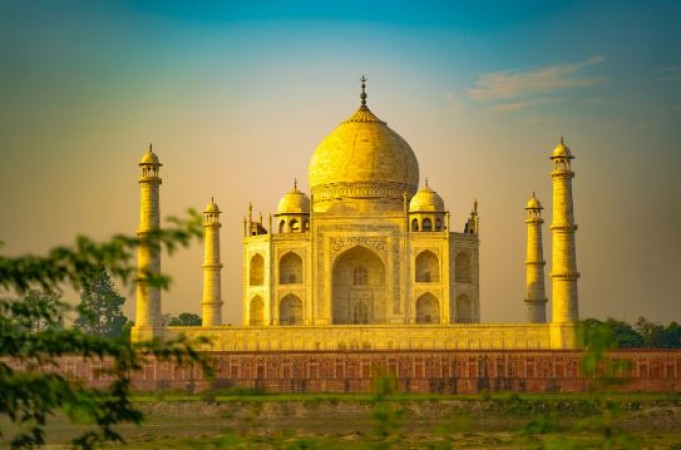
The Taj Mahal, an iconic symbol of India's rich cultural heritage, is renowned for its mesmerizing beauty and architectural brilliance. Beyond its breathtaking structure lies a fascinating phenomenon - the ever-changing colors of its white marble. As the sun rises and sets, the Taj Mahal's marble transforms, displaying a delightful interplay of colors - pinkish in the morning, white during the day, and golden at night. In this article, we will delve into the captivating reasons behind this spectacle and explore the magical allure of the Taj Mahal's color transformation.
The Legend of the Taj Mahal
The Eternal Love Story
The Taj Mahal was commissioned by the Mughal Emperor Shah Jahan in memory of his beloved wife, Mumtaz Mahal, who passed away during childbirth. This architectural marvel stands as an eternal testament to their profound love and devotion.
The Masterpiece of Mughal Architecture
Built between 1631 and 1648, the Taj Mahal is a perfect blend of various architectural styles, primarily Persian, Islamic, and Indian. Its grandeur lies in its symmetrical design and the meticulous use of precious materials, including the white Makrana marble.
The Enigma of Changing Colors
Pinkish Hue at Dawn
As the first rays of the morning sun kiss the Taj Mahal's facade, the white marble takes on a delicate pinkish hue. This magical transformation creates a surreal and enchanting sight, leaving visitors in awe of its beauty.
Radiant White During the Day
As the sun ascends, the Taj Mahal returns to its original splendor, gleaming in radiant white. The pristine marble seems to mirror the sky, creating an aura of purity and serenity that captivates all who behold it.
A Golden Glow at Dusk
As the day draws to a close and the sun begins its descent, the Taj Mahal undergoes yet another metamorphosis. Bathed in the warm, golden rays of the setting sun, the marble appears to emanate an ethereal glow, evoking a sense of timeless beauty and magnificence.
The Scientific Explanation
The Taj Mahal's color-changing phenomenon is not merely a result of magic, but a fascinating scientific occurrence. The changing colors can be attributed to the scattering of sunlight by the Earth's atmosphere and the unique properties of the white Makrana marble.
The Earth's atmosphere acts as a natural prism, scattering shorter wavelengths of light (blue and violet) more effectively than longer wavelengths (red and yellow). During sunrise and sunset, the sun's light has to pass through a thicker layer of the atmosphere, resulting in the scattering of shorter wavelengths. This scattering effect causes the Taj Mahal's marble to exhibit a pinkish hue during these times.
Additionally, the Taj Mahal's white Makrana marble contains subtle impurities that react with light, further influencing its color perception. The interplay of sunlight with the marble's mineral composition contributes to its luminous white appearance during the day and the golden glow at dusk.
The Symbolism and Significance
Beyond its enchanting beauty, the Taj Mahal's color transformation holds symbolic significance. The changing colors are believed to represent the different phases of a woman's life - the blush of youth at dawn, the radiance of maturity during the day, and the wisdom and serenity of old age at dusk.
Moreover, the dynamic colors also symbolize the ever-changing emotions of love - from the pink flush of passion to the golden glow of eternal commitment. This poetic interpretation adds another layer of depth to the already profound story of love and devotion that the Taj Mahal embodies.
Preserving the Timeless Treasure
As millions of visitors from across the globe flock to witness the Taj Mahal's mesmerizing color metamorphosis, preserving this architectural wonder becomes a paramount concern. Environmental factors, such as air pollution and acid rain, have posed threats to the marble's original luster.
To safeguard this UNESCO World Heritage Site, rigorous conservation efforts are undertaken. Cleaning and restoration techniques, as well as measures to control pollution in the surrounding areas, are continuously employed to ensure that future generations can still marvel at the Taj Mahal's ever-changing beauty.
The Taj Mahal's white marble, a canvas for nature's ever-changing colors, remains an enduring marvel that continues to captivate the hearts and minds of people worldwide. From the delicate pink hues at dawn to the radiant white of daytime and the golden glow of dusk, this architectural wonder stands as a testament to the brilliance of Mughal craftsmanship and the eternal power of love.
Top destinations for foodies on India
Chennai Delights: Exploring the Vibrant Culture and Iconic Landmarks